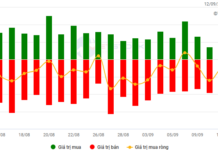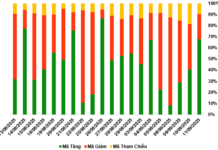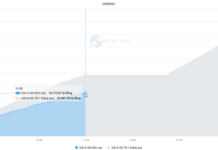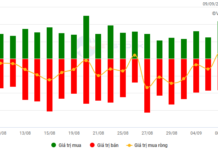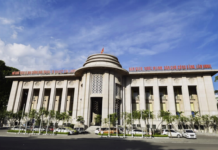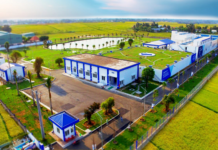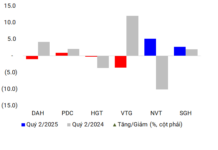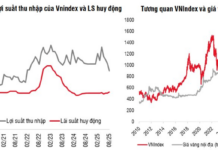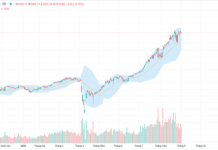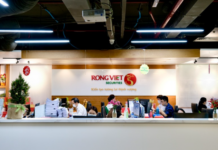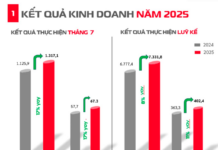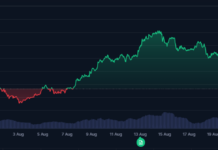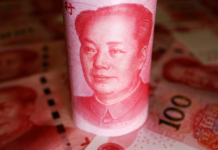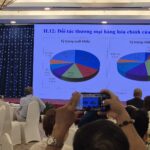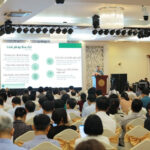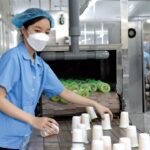
|
Mr. Truong Van Can, Vice Chairman and General Secretary of the Vietnam Textile and Apparel Association, reported that the industry’s export turnover reached an estimated $30.8 billion in the first eight months of 2025, marking a 7% increase from 2024. Import turnover reached $6.8 billion, a 3.2% increase, resulting in a trade surplus of $14 billion.
|
At the conference, Mr. Can highlighted one of the significant challenges currently faced by the textile industry: the countervailing duties imposed by the United States. As soon as these tariffs were announced, many businesses and brands collaborated to boost exports to this market as much and as quickly as possible. As a result, export turnover to the US increased by 17% in the first six months.
With the current tax rate of around 20% on Vietnamese goods and potential transhipment taxes of up to 40%, businesses will undoubtedly encounter difficulties. Increased costs will reduce profits, impacting the resources available for improving workers’ lives and limiting investment in digitizing and greening production.
However, Mr. Can acknowledged several reasons why excessive worry is unnecessary. First, it is unlikely that the US textile industry will revert to domestic production. Second, compared to direct competitors, the tax rate applied to Vietnam is not the most detrimental. Specifically, China is subject to a 30% rate, India to 50%, while Vietnam is at 20%, on par with Bangladesh, Cambodia, and Pakistan (around 19-20%). Therefore, the risk of order diversion from Vietnam to other countries is not significant. The main challenges lie in increased costs and potential reduced consumption by US citizens due to higher prices.
During the conference, Mr. Can suggested the need to diversify export markets. Currently, Vietnam’s textile exports to many regions are lower than their potential. The EU accounts for only 2.65% of the bloc’s textile imports, the UK 4.45%, Russia 3.1%, CPTPP 9.6%, and ASEAN 4.9%. There is considerable room to increase export volume to these markets.
Along with market diversification, Mr. Can emphasized the importance of diversifying import markets for raw materials and accessories. Currently, Vietnam imports from about 30 countries, but the proportion from China remains high. Taiwan accounts for 7.6%, the US 7.3%, and South Korea 7.1%. Therefore, it is crucial to have trade offices support the search for new suppliers to reduce dependence on any single market.
Mr. Can also stressed the need to develop domestic production of raw materials and accessories. While Vietnam has been producing a significant amount of yarn, there is still a severe shortage of fabric for export-oriented garment manufacturing. Given the fundamental nature of this issue, he proposed that the Ministry of Industry and Trade, along with local authorities, promote investment in this field and introduce reputable investors with strong financial and technological capabilities to Vietnam through trade offices.
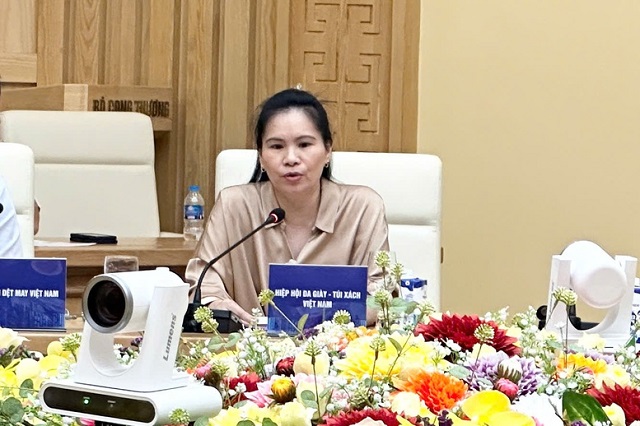
|
Ms. Phan Thi Thanh Xuan, Vice Chairman and General Secretary of the Vietnam Leather, Footwear and Handbag Association, reported an impressive growth rate of about 10% for the first eight months of 2025. The US market remains the main driver, with a 12% increase.
|
The footwear industry faces new cost pressures and competition.
According to Ms. Xuan, the most significant challenge at present is export prices. While domestic production costs are rising, export prices are being pushed down. Vietnamese businesses cannot compete with Chinese costs due to limitations in infrastructure and the supply chain for raw materials and accessories. As a result, many orders cannot be accepted.
Technological challenges also pose a barrier: there are products that customers want to transfer, but Vietnamese businesses have not yet mastered the technology, forcing continued production in China. Additionally, if Indonesia successfully negotiates an FTA with the EU by the end of 2026 or early 2027, it will create a significant challenge for Vietnam’s footwear industry.
Based on this reality, Ms. Xuan proposed policy improvements regarding import and export. While the law has become more flexible, some decrees have not been amended, causing significant difficulties for businesses in proactively exporting and importing raw materials and accessories. Enterprises cannot get tax refunds, forcing them to switch to imports instead of purchasing domestic raw materials and accessories.
Furthermore, regarding the formation of a center for raw materials for the textile, footwear, and wood industries, Ms. Xuan shared that the associations have agreed to develop a proposal but are facing challenges due to procedures and a lack of implementation experience. This is a new model, not just a warehouse but also a complex that integrates a market, a research and development center, and testing and quality assessment services.
“We have the land, but we lack international consulting and practical experience. We propose that the Ministry of Industry and Trade and the trade offices, especially in China, support and share their experiences,” Ms. Xuan requested.
In response to the associations’ suggestions, Minister of Industry and Trade Nguyen Hong Dien shared that, starting in October 2025, the Government has assigned the Ministry to organize four annual industrial and trade fairs on a national and international scale. This will provide a great opportunity for businesses and industry associations to introduce their products, exchange technology, and seek investment and production cooperation.
Regarding the proposal to establish a center for raw materials for the textile, footwear, and wood industries, the Minister said that the Vietnamese Trade Office in China would connect with the Chinese Ministry of Commerce to propose their support in studying this model.
Nhat Quang
Trade Negotiations Need a ‘Pigs Might Fly’ Approach
“In the world of trade negotiations, it’s all about give and take to strike a successful deal. As Mr. Nguyen Anh Son, Director of the Import and Export Department at the Ministry of Industry and Trade, aptly puts it, ‘It’s like a barter system; you offer pork, and they offer wine.’ Knowing which industries to push forward and which to hold back is key to achieving the best outcome for all involved.”

